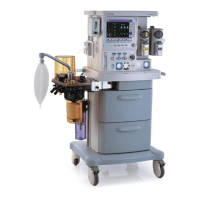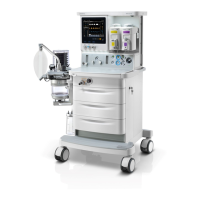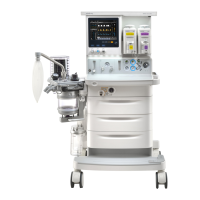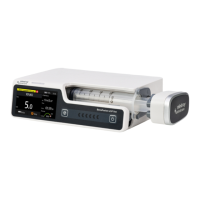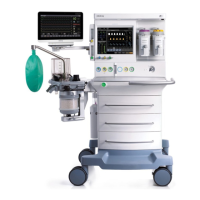10 - 8
■ For 6-lead ECG monitoring, besides the normal screen, you can also choose 8-lead full screen or 8-lead half
screen.
■ For 12-lead ECG monitoring, besides the normal screen, you can also choose 7-lead full screen, 7-lead half
screen, and 12-lead full screen.
To choose the desired screen configuration, follow this procedure:
1. Select the ECG numeric area or waveform area to enter the ECG menu.
2. From the bottom of the menu, select Full-Screen, Half-Screen, or 12-Lead (for 12-lead ECG monitoring).
10.6.2 Setting ECG Alarm Properties
To set ECG alarm properties, follow this procedure:
1. Select the ECG numeric area or waveform area to enter the ECG menu.
2. Select the Alarm tab.
3. Enter the password if required. For more information, refer to 27.12The Authorization Setup Settings.
4. Set alarm properties as desired.
10.6.3 Setting the Analysis Mode
To set the ECG analysis mode, follow this procedure:
1. Select the ECG numeric area or waveform area to enter the ECG menu.
2. Select the Setup tab.
3. Set the Analysis Mode.
◆ Multiple Leads: the monitor uses four leads (ECG1 to ECG 4) as calculation leads.
◆ Single Lead: the monitor uses one lead (ECG1) as calculation lead.
• When a 3-lead ECG cable is used, the monitor always uses single lead as calculation lead.
10.6.4 Changing ECG Wave Settings
10.6.4.1 Selecting the Leads of Displayed ECG Waveforms
To select the leads of displayed ECG waveforms, follow this procedure:
1. Select the ECG numeric area or waveform area to enter the ECG menu.
2. Select the Setup tab.
3. Select ECG to set the lead of each ECG waveform.
4. If more than three ECG waveforms are displayed, select the More Leads tab, and then select ECG to set
leads of other ECG waveforms.
The waveform of selected lead should have the following characteristics:
■ The QRS complex should be either completely above or below the baseline and it should not be biphasic.
■ The QRS complex should be tall and narrow.
■ The P waves and T waves should be less than 0.2mV.
• Ensure that you have selected the optimal leads with the best waveform amplitude and the highest
signal-to-noise ratio. Selecting the optimal leads is important for detecting beats, classifying beats,
and detecting ventricular fibrillation.
